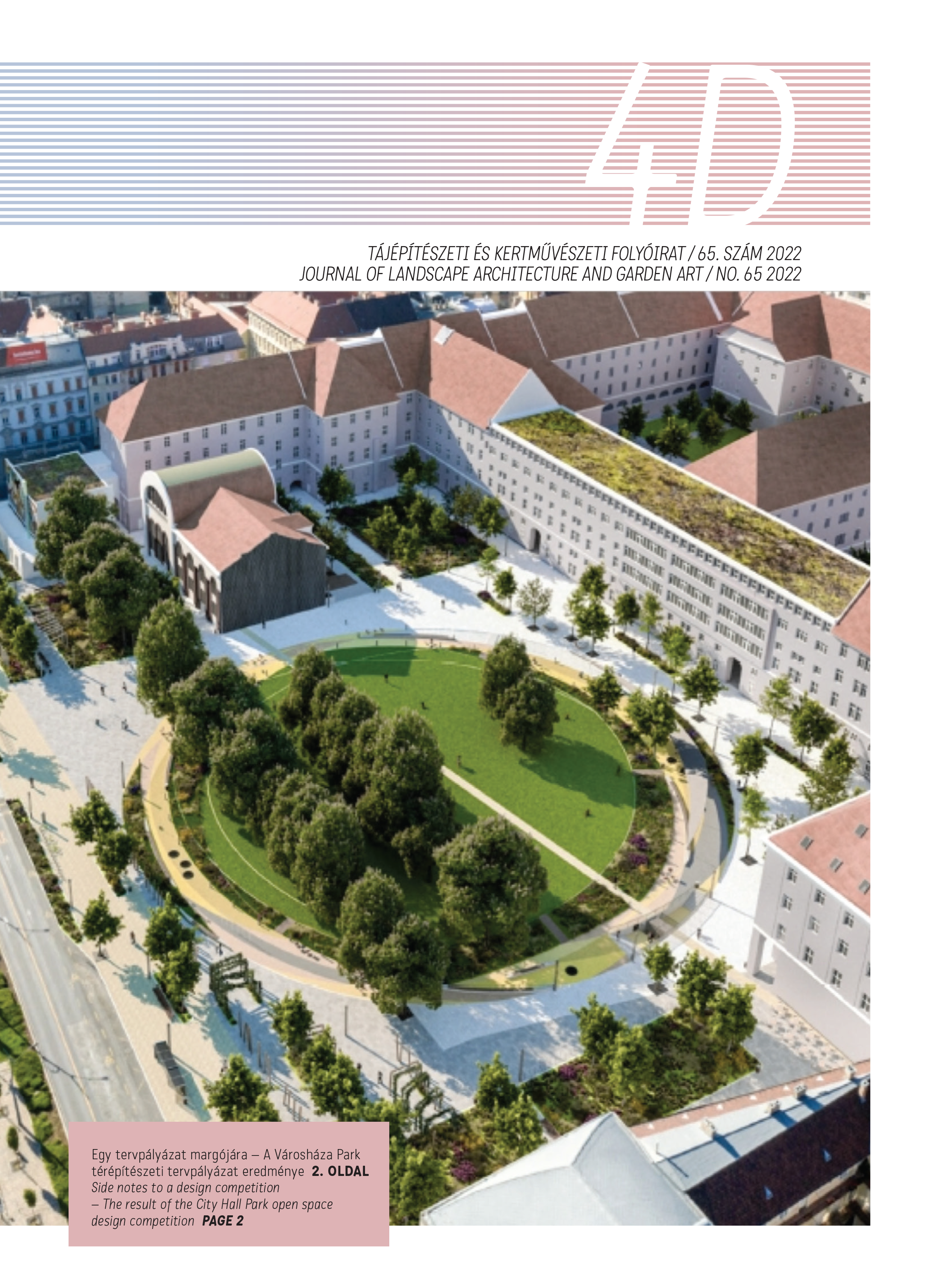Music and sounds in landscape architecture
DOI:
https://doi.org/10.36249/4d.3390Keywords:
soundscape, music, acoustic design, musical playground, land artAbstract
This paper discusses the potential role of music and sounds in landscape architecture, and highlights the significance of conscious acoustic design. To validate this statement, the article summarises the environmental psychological aspects of a typical urban soundscape, and provides a selection of English-language literature on the subject covering approximately the last 25 years, to summarise design principles demonstrated by experiments and real-life examples. This provides a guideline to the methodology of influencing the acoustic environment, illustrated with a number of examples from both abroad and Hungary. The presentation of the topic ranges from general aspects to criteria related to the different components of a landscape architecture project, such as the selection and arrangement of functions, the design of physical boundaries and planting, the application of materials, maintenance issues or the integration of water features and artwork into the composition, while taking the perspectives of acoustic design into account. Although the paper has a specific focus on sounds and music as parts of the audible environment, a brief chapter also collects the opportunities of visualization of the music theme. Finally, the literature review touches on the special issue of musical playgrounds, where the music theme can be particularly articulated and concentrated either visually or acoustically. On the whole, it can be concluded that there are a wide range of landscape architecture tools and examples of good practice in the implementation of soundscape design principles, which, if applied thoughtfully, can create more liveable and characteristic open spaces in our environment
Downloads
Published
Issue
Section
License
Copyright (c) 2022 Vámosi Lívia, Karlócainé Bakay Eszter

This work is licensed under a Creative Commons Attribution-NonCommercial-NoDerivatives 4.0 International License.
A folyóirat Open Access (Gold). Cikkeire a Creative Commons 4.0 standard licenc alábbi típusa vonatkozik: CC-BY-NC-ND-4.0. Ennek értelmében a mű szabadon másolható, terjeszthető, bemutatható és előadható, azonban nem használható fel kereskedelmi célokra (NC), továbbá nem módosítható és nem készíthető belőle átdolgozás, származékos mű (ND). A licenc alapján a szerző vagy a jogosult által meghatározott módon fel kell tüntetni a szerző nevét és a szerzői mű címét (BY).



